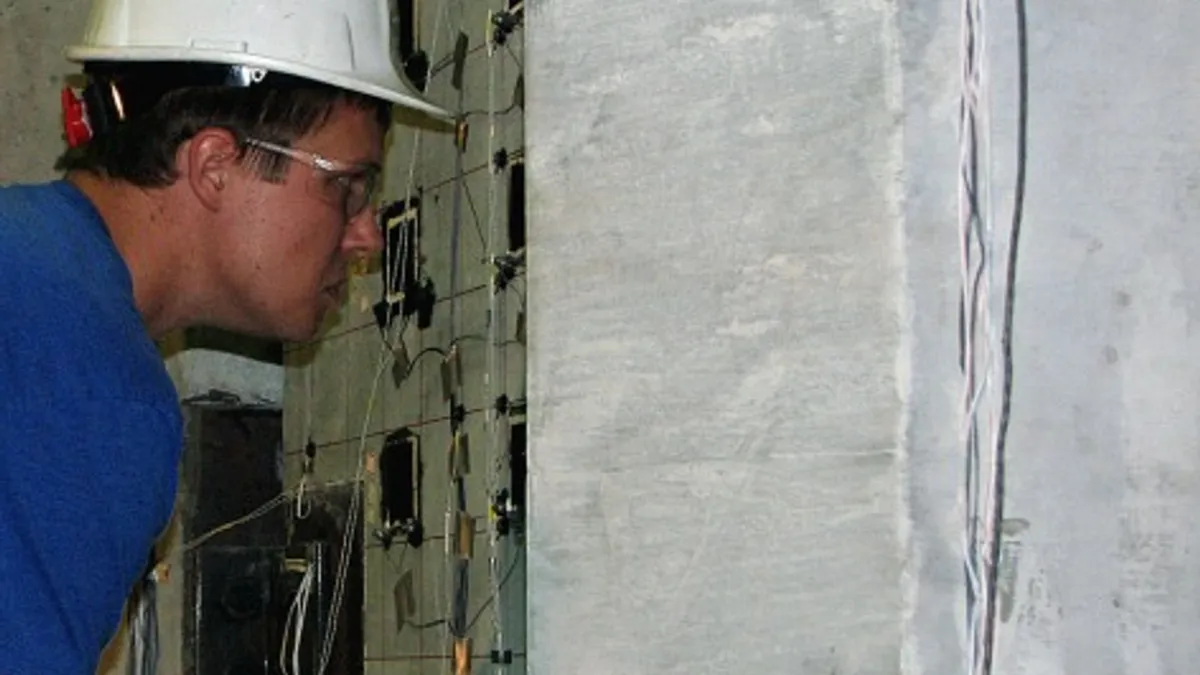Dive Brief:
- Tests by the University of Kansas show that shear walls reinforced with 100-ksi bars can hold up to large lateral deformations without losing significant strength, reported Engineering News-Record.
- Based on the two-year testing project, structural engineers hope that building codes will allow 80-ksi reinforcing steel, rather than the mandated 60 ksi, in reinforced concrete shear walls. This would help reduce rebar congestion in walls in high-seismic zones.
- The American Concrete Institute's ACI 318 standard-writing committee is using this data to support the increase in seismic design categories D, E and F.
Dive Insight:
National disaster-related costs made 2017 the most expensive year on record. Although most of those were hurricanes and wildfires, earthquakes are another natural disaster not to be overlooked. Research such as the University of Kansas tests help engineers and architects understand how to build more stable buildings in particularly high-risk areas.
Work has begun on a Seattle skyscraper, which boasts the nation's first rebar-free concrete core. Instead, it will use a coupled steel-plate composite sheer wall where concrete fills cross-tied plates to increase seismic resistance.
Meanwhile, University of British Columbia researchers engineered eco-friendly ductile cementitious composite, which is concrete reinforced by polymer-based fibers that can resist seismic activity. At a molecular level, it’s comparable to steel's make-up.
Los Angeles enacted the nation's most stringent seismic building code regulations in 2015 and started sending out compliance notices late last year. Owners of buildings with non-ductile concrete must submit a retrofit checklist prepared by a civil or structural engineer within three years and proof of compliance, or plans to do so, within 10 years. An estimated 1,200 concrete buildings fall under the ordinance.
A $1.5 billion San Diego project, while still in its conceptual design phase, focuses on resiliency, including future sea-level rise and possible seismic activity. The Scripps Health System in San Diego is in the midst of a $2.6 billion construction initiative encompassing five medical centers, which includes necessary seismic upgrades to meet the state’s earthquake standard for hospitals.











